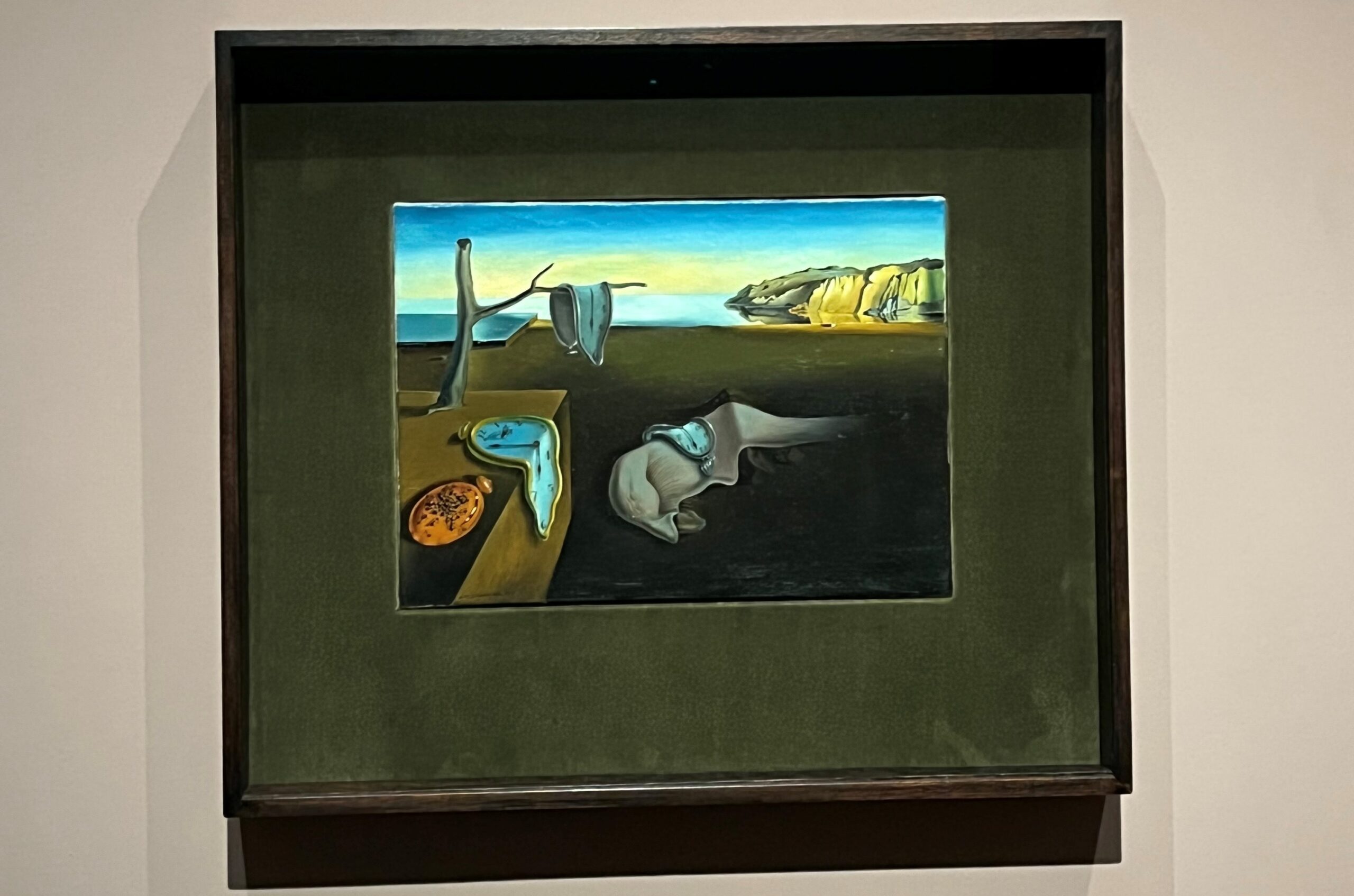
Deciphering a Salvador Dali Painting
Today we will be diving deeper into the mystical world and oeuvre of Salvador Dali.
It is easy to get lost and indulge in the imposter syndrome associated with pursuing a fine art museum. You are hooked into the narratives of the works or by the talent of how realistic the painting may be, then suddenly you are met with something, where you cannot identify any meaning behind it at all? Trying to decipher the hidden messages embedded in contemporary art can be somewhat of a difficult task. Some artwork just needs to be unpacked to uncover the subliminal messages that they are meant to convey.
We here at Masterworks, want to make this as seamless as possible so we have created a comprehensive guide to providing a palatable service for visual analysis of some of our favorite artists’ major works.
Undeniably one of the most iconic Surrealist painters of the 20th Century, Salvador Dali is also the most misunderstood. He created a style infused with mystique, fear, fantasy, and, above all, symbolism. Drawing from both his subconscious and a Freudian exploration of the dream world, Dali used ordinary objects from real life to represent deeper emotional or psychological themes.
From insects to clocks, telephones, keys, food, crutches, landscapes, and animals, Dali infuses meaning in the most minute details. A close look at his art also reveals religious icons from the Catholic Church and influences ranging from science to sex to mysticism. Several dominant themes carry across his paintings, sculptures, and drawings, using seemingly arbitrary items as symbolism to impart meaning, hidden messages, or optical illusions.
Here’s a look at some recurring and dominant symbolism used by Salvador Dali, from his early works through his “paranoiac-critical method” in the 1930s and a later “nuclear mysticism” style after returning to the Catholic faith.
Melting Clocks
Many art aficionados know Salvadore Dali for his most acclaimed painting, “The Persistence of Memory,” which introduces the “melting clock” symbolism that crops up continually within his body of works. Completed in August 1931, it’s considered the unparalleled iconic painting of Surrealist art. The melting clock imagery represents the persistence of time and its dominion over humanity, as well as its fluidity. The artist himself is quoted as saying, “The materialization of time flexibility and indivisibility of space … This is a fluid.”
The first melting-clock painting is said to have resulted from either a dream or real occurrence of Dali watching Camembert cheese melt on a hot day while waiting for his wife, Gala, to return from an evening out without him. From that scenario comes an acknowledgment that the passage of time varies according to individual interpretation. A metaphorical interpretation incorporates the clocks devouring themselves while taking down whatever else lies in their paths. This also ties into Dali’s known fear of death, as represented by the uncontrollable passage of time.
Elephants
In the world of Dali, elephants often take on a surrealistic appearance with long, thin, nearly transparent legs. Interpretation by art critics varies, with some attributing these features to themes of elusive desire and others pointing out the contrast of an actual elephant’s bulky mass. Given Dali’s known fascination with the concept of power, the presence of elephants in his art evokes strength and dominance. Many of his elephant paintings include obelisks, which are symbols of power as well as bearing phallic characteristics.
Some renowned Dali paintings with elephants include “The Temptation of Saint Anthony” and “Dream Caused by the Flight of a Bee.” In “Swans Reflecting Elephants,” he showcases his expertise in the art of contrast and transfiguration in which elegant swans morph into massive thundering animals.
Ants
The insect world gets intricate treatment in the art of Salvador Dali, including grasshoppers, flies, daddy longlegs, snails, and, most prominently, ants. Ants symbolize some of Dali’s greatest obsessions: death, fear, decay, and decomposition. Although it’s not entirely clear why his ant paintings reflect these themes, it’s generally accepted that the psychological roots come from his five-year-old self watching an army of ants devour the decomposing remains of small animals. This verifies the enduring themes of death and human mortality that permeate his art.
It’s worth noting the presence of ants in Dali’s “Persistence of Memory” collection, particularly as it’s the only piece in which the clock is not melting. Time becomes less fluid when it’s inevitably devoured by death. Another notable presence of ants is in “Soft Self-portrait With Fried Bacon.”
Drawers
Drawers being pulled out of bodies in Dali’s paintings is both fascinating and disturbing, as well as often misunderstood by those studying symbolism in Dali’s paintings and art objects. But his connection and personal friendship with Sigmund Freud help in deciphering the connection. Freud’s concept of the “idea drawer” presents itself in Dali’s symbolism of memory, secrets, and unconscious desire. The drawers are slightly open, indicating that fear and obsession can be “pulled out” and examined, even though the empty drawers leave a void. These drawers appear in various forms of Dali art, such as the comprehensive murals on the Palace of Winds ceiling and his Venus of Milo sculptures.
Other Important Symbols
Symbolism in the art of Salvador Dali is pervasive and intriguing on multiple levels. Other notable symbols in his art include bread, which represents life sustenance as well as Dali’s religious affiliation, representing the “body of Christ.” Likewise, eggs in his art symbolize birth, hope, resurrection, and procreation. The “crutch” symbolism leans toward a reliance on outer objects for emotional support and conquering fear.